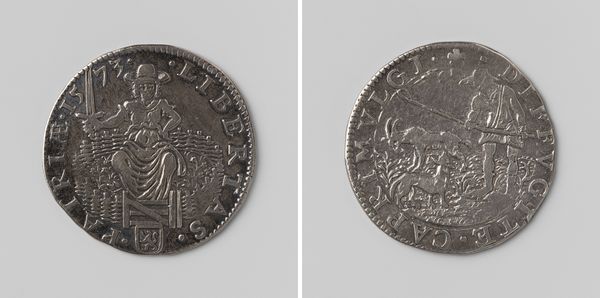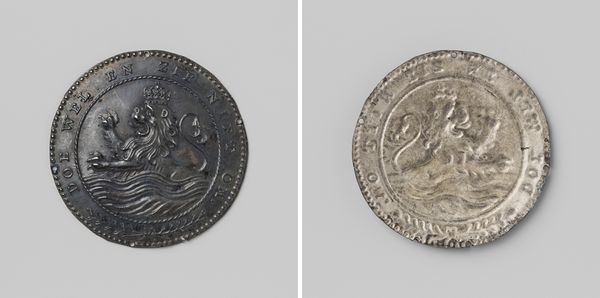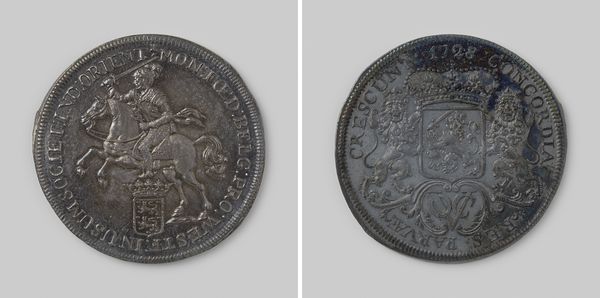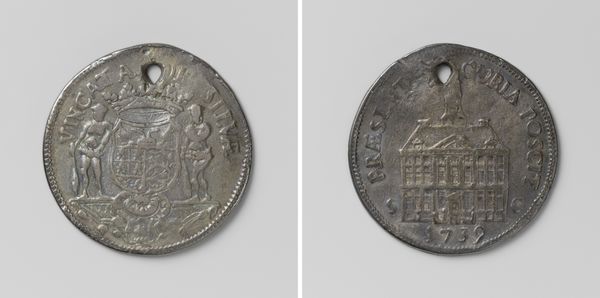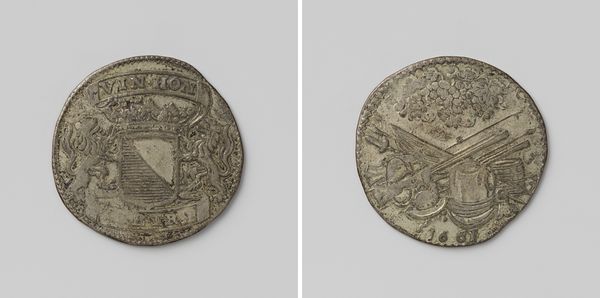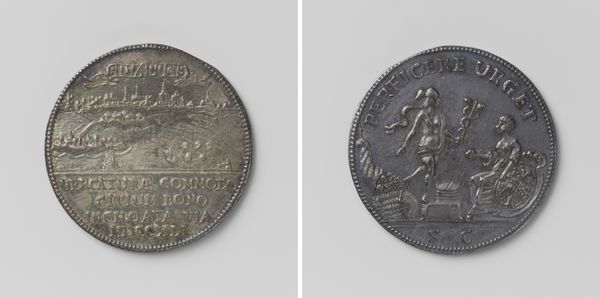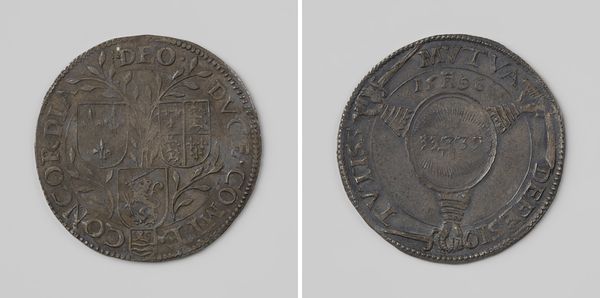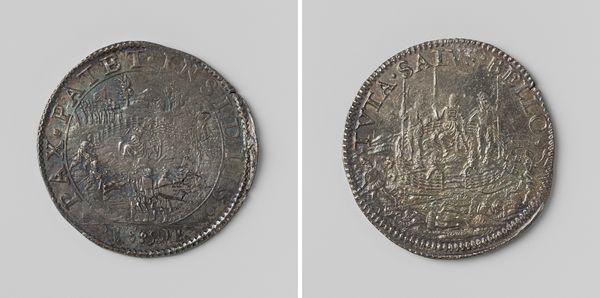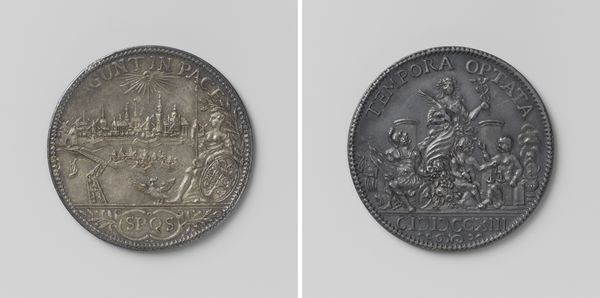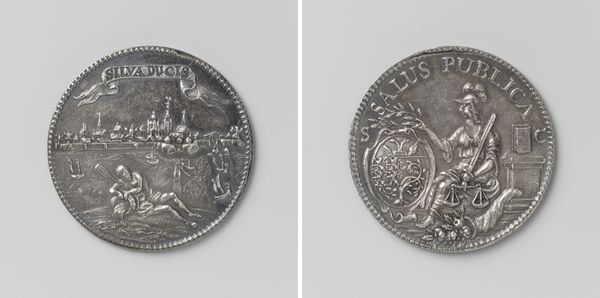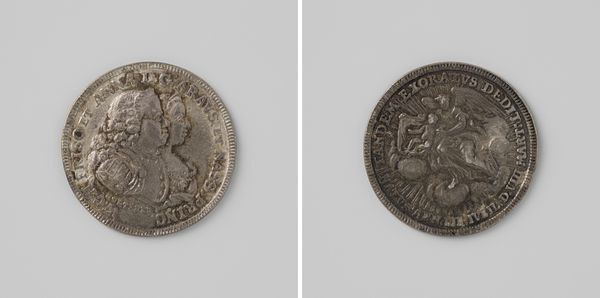
metal, relief, sculpture
#
portrait
#
allegory
#
baroque
#
dutch-golden-age
#
metal
#
sculpture
#
relief
#
sculpture
#
history-painting
Dimensions: diameter 2.7 cm, weight 6.48 gr
Copyright: Rijks Museum: Open Domain
Curator: The Vroedschapspenning of the city of 's-Hertogenbosch, dating back to 1711, captures a specific moment in the city's history. Struck in metal, it offers both a portrait of the city and an allegorical scene. Editor: It's remarkably austere. Looking at the muted tones and the weight of the metal, there’s a solemnity here that speaks to the responsibilities of governance. Curator: Precisely. The 'Vroedschap' were the city councilors, so this piece was commissioned to celebrate or commemorate their work. On one side, we see a depiction of 's-Hertogenbosch itself, the cityscape rendered with impressive detail, highlighting the city's structures and its connection to the water. Editor: And opposite that, we have this imposing female figure. Draped in classical robes, she carries the scales of justice. It seems a very direct representation of civic virtue. A laurel wreath connects her to a family shield, right? How would this piece interact with ordinary people? Curator: Coins and medallions like these acted as important forms of propaganda and civic display in the early modern period. Coins had a wider circulation naturally; a 'penning' such as this was likely distributed among the elite to further solidify social bonds. The allegorical imagery communicated values to reinforce civic identity, power, and the expectations of good governance. Editor: Yet, while we are meant to interpret it as civic virtue, is it ever that simple? When we talk of justice and prosperity, for whom was that prosperity intended? Whose definition of justice was implemented? These symbolic representations have often masked exclusion. It's critical to reflect upon these coins representing more complex social hierarchies. Curator: That's absolutely correct, and an important reminder. Consider who had access to these images and who was actively excluded from these social and governing processes. We see evidence of complex, Baroque sensibilities in this imagery meant to signal stability but knowing the historical record as we do now, it highlights this tension with societal fault lines. Editor: Examining art like this encourages a critical view of our contemporary moment and of those in positions of authority today, perhaps reminding us of our civic responsibilities as well. Curator: A wonderful thought. These objects serve as powerful historical records of image making as an act of civic pride.
Comments
No comments
Be the first to comment and join the conversation on the ultimate creative platform.

